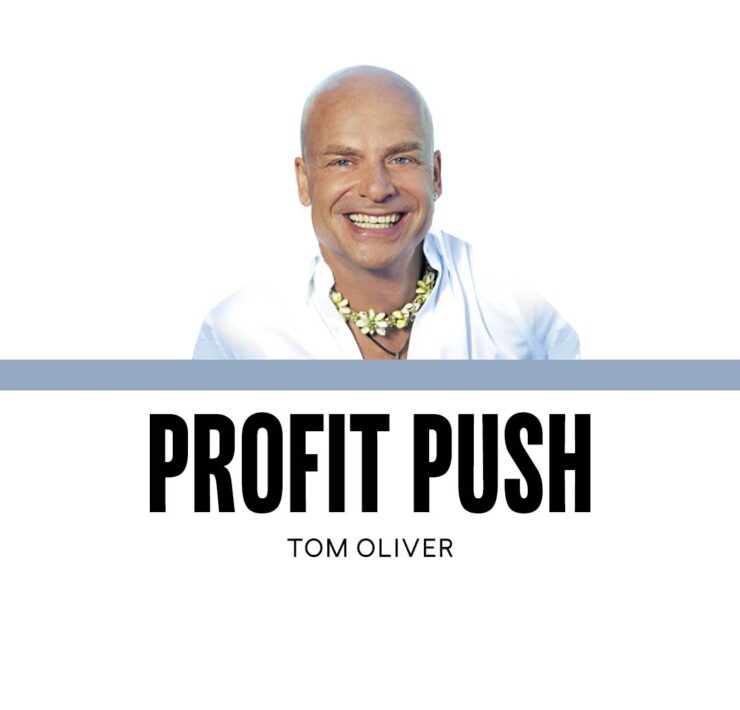Disciplined storytelling drives success in fragmented online world

Lester Estrada has been with Procter & Gamble (P&G) for 20 years and carries with him an extensive assignment history across Philippines, Japan, China and the rest of Southeast Asia. Currently, he is based in China as the Oral Care vice president and business unit leader. In this role, he is in charge of Oral-B and Crest, two well-known and iconic brands in China that he is looking to set up for the next S-curve of growth.
Lester won the Mansmith Young Market Masters Awards in 2012. In this interview, he shares insights into modern digital trends in China and their implications for countries like the Philippines.
Question: How are consumer behaviors in China evolving in the digital space, and what implications could this have for businesses outside of China, such as in the Philippines?
Answer: As the Chinese market becomes increasingly digital, it’s essential to stay anchored in real consumer behavior rather than get overwhelmed by data and activity. Understanding how consumers truly behave across the path to purchase is key.
Search is at the core of online behavior. It’s not just about what people are looking for, but why—are they researching, comparing or ready to buy? Instead of jumping straight to selling, brands should focus on being the best at meeting the consumer’s search intent.
Livestreaming in China is more than just a sales channel. It plays a critical role in educating consumers and building brand popularity. The right host and messaging can make the difference between success and failure.
As search and livestreaming empower consumers with more knowledge, they become more value-conscious and category-savvy. This fuels both ‘premiumization’ and increased competition. The market is less forgiving—many brands enter, but only a few win.
These shifts offer key lessons for other markets like the Philippines: prioritize value, relevance and digital readiness to stay competitive.
Q: Given the growing complexity of consumer touchpoints, how should brands capture consumer interest in their category or brand, and create a sustainable, positive cycle online?
A: Cashless transactions and e-commerce have merged into seamless ecosystems, with super apps like WeChat redefining consumer touchpoints. Brands must now build a presence across multiple digital ‘homes’—from TikTok shops to social media profiles to flagship e-commerce stores—each with a distinct role.
This fragmentation challenges brands to stay clear and consistent. Success depends on disciplined storytelling: choosing the right benefits to highlight, the tone of voice and how to collaborate with external voices like influencers. It’s not just about being present everywhere, but being intentional and coherent across each platform.
Q: With the increasing reliance on key opinion leaders (KOLs) and the growing consumer fatigue toward influencer marketing, how can brands keep their partnerships fresh and engaging, avoiding “content fatigue” over time?
A: Despite years of use, KOLs remain highly influential in China—so much so that influencer investments now rival traditional ad spend. This reflects a broader shift in how brands build trust and connection.
To keep partnerships fresh, brands must allow KOLs to speak authentically. Imposing outdated, rigid briefs can dilute impact. At the same time, brands need a clear identity to avoid losing focus amid multiple influencer voices.
The balance lies in strong brand-led messaging alongside flexible, creative collaborations. As influencer marketing evolves, staying authentic while reinforcing brand values will be key to avoiding content fatigue.
Q: What are the most effective methods for analyzing customer feedback, including ratings and reviews, particularly when it’s implicitly rather than explicitly written, yet still significantly impacting purchasing behavior?
A: In China, ratings and reviews become an inherent part of our monthly analysis—equally important as market share reports! The key is to frame it in a way that can translate to insights and actions: what are the positive reviews and which tertile does it stack up to versus the market? What are the negative reviews and how do these compare versus competition? Finally, it is important to go deep into why positives and negatives emerge and what the insights are behind this. I read this report with my entire team—including R&D (research and development) and sales teams—to ensure we have a holistic approach in diagnosing them and going beyond what consumers say (the deeper why).
Q: Livestreaming has gained traction in China, especially starting during the pandemic. What role does it play in the path to purchase, and how can brands best leverage this trend?
A: I have learned quite painfully that livestreaming is beyond just ‘selling in the moment’. If we simply measure the ROI (return on investment) of livestream as what we sell for the one-hour slot, we will never get it started. Truthfully, the consumer role for livestream is popularity and education. It is similar to an event activation at malls or public areas, where it is as much about eyeballs as sales. Consumers may end up buying well after the event, but the interaction triggered interest and consideration. With this mindset, it is then important to stay true to this role: find levers to drive popularity (celebrity host or an exclusive offer) and integrate the spiel with a compelling product story!
Q: In a new digital ecosystem where the pursuit of performance ROI may lead to higher costs and potential margin dilution, how can brands ensure they are delivering real value?
A: This is an important business model question and moment of truth for the brand leader. The digital ecosystem can be quite extensive and expensive. Hence, having a clear idea of portfolio you want to play and the right margin structure is important.
Second, being clear of the activities that matter for consumers and drive purchase intent. Don’t do things just for the sake of doing them. If your brand or category does not need livestreams because they are lower involvement, then don’t do it. Focus on other things that matter. If your consumers are not searching for the category, then [know] what are they searching for that may be connected to your category, and bring them closer to considering your brand.
Finally, don’t just hunt for short-term ROI. They are important, but sometimes misleading. What matters is how you bring consumers along the path to purchase and help them discover your brand in the very fragmented online world.
It is daunting but exciting and very much rewarding! It can be a big ocean (as China market often seems), but it is about focused choices anchored on consumer behavior.
Q: How are Chinese consumers influencing global product trends and innovations today?
A: China’s dynamic manufacturing and digital landscape makes it a breeding ground for rapid brand turnover and innovation. In categories like health and beauty, thousands of new brands emerge yearly, many failing within months due to low entry barriers—simple formulas, good packaging and a livestream presence are often enough to launch. Yet, some local players thrive, taking on global giants with disruptive product formats like leave-on treatments and unique ingredient combinations blending traditional Chinese and Western approaches.
Beyond products, innovation also thrives in retail and service models. Platforms like Costco and Sam’s Club now offer home delivery, while value-driven marketplaces and VIP memberships reshape how consumers shop. Like brands, digital retail in China is highly competitive and fragmented—constantly evolving in response to consumer demand. —CONTRIBUTED INQ
Josiah Go is chair and chief innovation strategist of Mansmith and Fielders Inc. The search for the 5th Mansmith Innovation Awards is ongoing. The 1st Mansmith Product Masters Summit is on June 24 at the Carlos P. Romulo Auditorium, Makati. Email info@mansmith.net for more details.
Josiah Go is chair and chief innovation strategist of Mansmith and Fielders Inc. He is also cofounder of the Mansmith Innovation Awards. To ask Mansmith Innovation team to help challenge assumptions in your industries, email info@mansmith.net.





















